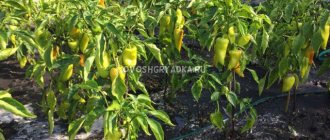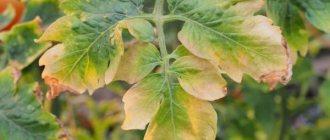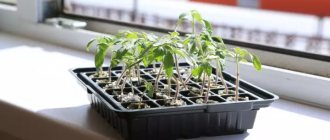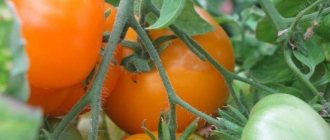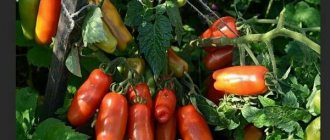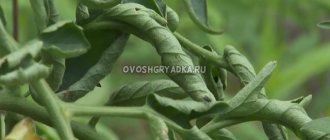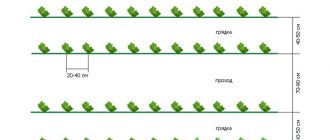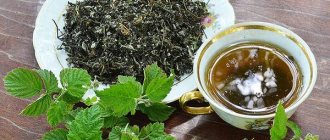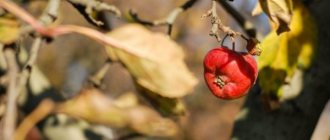Tomatoes: whether to pick off the lower leaves. Brief information about tomatoes
Tomatoes: whether to pick off the lower leaves. Brief information about tomatoes
Tomato is an annual or perennial herbaceous vegetable crop from the nightshade family. At the moment, there are more than a thousand varieties. Tomatoes are very common in gardens and plots. Nowadays it is very difficult to imagine a garden that does not have tomato bushes. Often, gardeners and gardeners organize competitions. These competitions compare the quality of the fruit and its taste. You can consider yourself a real gardener if every year you get a good harvest and quality fruits.
Tomatoes: whether to pick off the lower leaves. Two points of view on the problem
Tomatoes: whether to pick off the lower leaves. Two points of view on the problem
Tomatoes are not the most difficult crop to grow; they are quite unpretentious, but each crop has its own nuances. So, removing excess leaves, is it really necessary and is it as easy as it seems? In fact, this operation does not only involve tearing off excess lower leaves; you must follow the rules so as not to injure or harm the plant. There are two types of people, the first believe that removing leaves is mandatory, the second holds the opposite point of view. Later in the article you will find out whether this is necessary and how to do it correctly.
Is it necessary to pick off the lower leaves of tomatoes, what's the point?
Is it necessary to pick off the lower leaves of tomatoes, what's the point?
As mentioned above, people are divided into two camps, those who are for and those who are against. Often people who have not been growing tomatoes for long believe that since the leaves are created by nature, the plant definitely needs them and removing them can cause great harm. Experienced gardeners and scientists most often argue that removing the lower leaves of tomatoes is simply necessary for both the plant and the person.
Correct timing for pruning leaves
Some gardeners begin removing the lower foliage as soon as the fruit cluster begins to bloom . A separate category states that this should be done after the tomatoes are formed .
Based on theory, during the period of flowering and ovary formation, tomato brushes receive the necessary nutritional components formed as a result of photosynthesis directly from the leaves. A little later, as soon as the tomatoes begin to synthesize them on their own, the leaves can be trimmed.
It is impossible to determine specific deadlines for this . Much depends on the type of crop, the climate in a particular area, and the greenhouse microclimate. It is necessary to take the period of flowering and fruit appearance as a guide. As soon as the vegetables begin to increase in size and turn brown, the lower leaves should be removed gradually.
In a normally developed bush, the thirty-centimeter part of the stem under the lower fruit cluster should be empty . Only in this case will it receive the required amount of light, and nutrients from the root system will flow directly to the ripening tomatoes.
In a normally developed bush, 30 cm of the lower stem has no leaves
Feel free to add to this an increase in air humidity, improved ventilation, and a reduced risk of disease.
Tomatoes: whether to pick off the lower leaves, the benefits of the procedure
Above in the article are the reasons that leaves need to be removed now, a little about the advantages.
First advantage.
#1. Removing the lower leaves will allow air to pass more freely between the shoots of plants and reduce the risk of various diseases. Of course, the risk does not go away completely, but it decreases.
Second advantage.
#2. Late blight and other fungal diseases begin precisely from the lower leaves, therefore, by removing them, the gardener reduces the risk of developing the disease throughout the plant.
Third advantage.
#3. Leaf removal is the removal of excess green matter. Since a fairly large amount of nutrients and moisture from the soil is spent on excess leaves, after their removal it will go to the fruits, which improves their quality.
Leaf removal technique
The procedure for eliminating tomato leaves must be carried out correctly. It is advisable to trim “unnecessary” organs in the morning and in sunny weather. This way, the wounds created by removal will heal faster and will not become a source of disease development.
Tomato leaves are easy to tear off if you press the petiole up, parallel to the stem. If you pull down, you can tear off long strips of the plant's skin.
When tomato bushes in a greenhouse show signs of diseases on the leaves or even the fruits, then such parts of the tomato must be immediately eliminated. If the disease has affected only a lobe, then only it can be cut off and the organ itself can be left in culture. Leaves are important organs for the nutrition and growth of the vegetable. Therefore, it is possible to eliminate them all, leaving only the top, only when 7-8 clusters of fruit have been formed.
The issue of removal technique remains important for most gardeners: they can be trimmed or simply torn off. In principle, there is no significant difference. The main thing is disinfection after each bush. Therefore, it is better to pick leaves while wearing gloves, and after trimming, the scissors must be treated with alcohol or a saturated solution of potassium permanganate. It’s good if a bottle of ready-made disinfectant is always at hand: at the dacha or in the greenhouse. After all, disinfecting the tool will help avoid massive contamination of tomatoes.
When to pick off the lower leaves of tomatoes, rules
Above, you learned why you need to cut leaves, and now you need to find out how to do it correctly. There are several recommendations.
First recommendation. Before the process of removing leaves, the bushes need to grow a little, that is, you cannot remove the leaves immediately after planting, the bush has not yet had time to get stronger. Hasty removal of leaves can lead to slow growth and insufficient formation of future fruits. Two weeks after planting, the bushes will be sufficiently strong and it will be possible to remove the lower leaves.
Second recommendation. First you need to inspect all the plants and remove leaves that are modified. As we said above, a change in color may indicate infection of the leaves. After harvesting the infected leaves, you can also cut off the healthy ones.
Third recommendation. If for some reason you are afraid to remove the leaves the plant needs, then you can carry out the treatment on the north side, where the leaves are not constantly exposed to the sun and are not so involved in the process of photosynthesis. On the north side the leaves are in the shade. In this case, removing such leaves will not affect the growth and development of the plant in any way.
Fourth recommendation. It is important to carry out removal carefully and accurately. Sometimes, after removing the lower leaves, new inflorescences begin to grow in this place. It is better to remove them if the plant’s flowering process is normal. If there is an insufficient number of flowers and few fruits are formed, then you can leave the inflorescences. The number of flowers should be determined by determining the variety of your tomato.
Fifth recommendation. The correct technique for removing leaves is very simple, you press the base of the petiole and gently pull upward. If done correctly, you will sort of rip the leaf out of its place. When pulling out, it is better to support the main stem of the tomato so that it does not get damaged. The movements should not be sudden, because if you move too quickly, the leaves can become like a puff, and it can make a wound on the stem. Infection can enter the wounds and lead to infection of the entire plant.
Sixth recommendation. The ideal weather for removing leaves is sunny, without rain. It is important to remove excess leaves in the morning, around eight o'clock. When a leaf is pulled out, a small wound remains in its place on the plant. It will heal faster under the influence of sunlight. When the wound heals, the risk of contracting any infections will decrease.
Seventh recommendation. It is recommended to take some precautions when removing excess leaves. It is not recommended to remove leaves more than twice a week. And it is better not to remove more than two or three sheet plates at a time. With this removal mode, the plant will receive minimal damage.
Eighth recommendation. There is a main rule that must be followed. If the removal of leaves occurs on a cluster on which the fruits have not yet begun to form, you cannot remove more than one leaf. If the fruits on the cluster have already formed, then almost all the leaves can be removed, with the exception of a few at the very edge of the shoot. The rule applies only to the lower tier of leaves on the bush. We do not touch the upper part of the bush.
It is recommended to remove leaves in two stages.
How to trim tomatoes in a greenhouse - features and rules for caring for tomatoes (103 photos)
Growing tomatoes requires a lot of care. This vegetable needs plenty of sunlight, and if the lighting is weak, it will wither or not produce a harvest.
If the plants are planted too close, the leaves will interfere with each other and prevent the penetration of light. And there will either be no fruits at all, or they will grow small and withered, since they do not have enough energy. Therefore, you should trim tomatoes on time.
Do I need to prune tomatoes in a greenhouse?
When a plant does not have enough light, it strives with all its might to maintain its life, and spends a minimum of effort on the growth of tomatoes.
It is for this reason that it is very important to remove unwanted leaves. After this procedure you will notice how your harvest has increased
Moreover, you will avoid the plant being affected by various diseases that quickly develop in the shade, and the tomatoes themselves will become large, fleshy, and even in color.
detailed instructions
First of all, pay attention to the leaves that are close to the soil - they need to be trimmed so that the rays of the sun fall on the base of the stem. Remove all leaves down to the first flowers at the bottom
Also trim off those that block light from reaching the fruits and other leaves.
It is worth removing the stepsons, with the exception of the strongest ones, so you will ensure a surge of strength in one place for better development.
At the very end, select any ovary and leave a few leaves on it, and cut off the others. Thus, the plant will expend more energy on feeding the fruits. Trim tomatoes 2-3 times a week.
How and when to prune correctly
At first it may seem that removing leaves looks blasphemous. This may be partly true, sometimes it happens that there is no need to cut them off.
We must not forget that even a leaf has its deadline. Over time, they begin to turn yellow, become stained, weaken and become breeding grounds for disease. That is why such leaves should be removed without hesitation.
Then start lightening the bush. To do this, it is necessary to remove leaves from the northern part of the plant and in its depths. This will improve not only the light penetration, but also the ventilation in the greenhouse.
Remove growths from the brush as well. Let's figure out what it is. Sometimes it happens that after a brush of flowers the shoot continues to grow: a stem, again flowers and leaves. This is not a reason for joy, because the hand must develop fully.
It must be remembered that if the fruits have not yet set, then most of the leaves should remain above them. And if the tomatoes are already tied, then remove all unnecessary leaves below the brush.
You can pinch the tops of greenhouse tomatoes from the end of July. After this, it is allowed to leave only a few top leaves and remove the rest. This procedure is an excellent preventive measure for the plant.
Pruning in the greenhouse
First, you need to decide how many stems the plant will have. There is no point in leaving them in large quantities, because this will only add more leaves. For a case in a greenhouse, it is enough to leave just one stem. Cut off all the shoots on the sides, the sprouts that form under the first bunch of fruit.
Do not ignore the leaves - they also need to be removed, except for the very top ones. This way, you will not disturb the sap flow in the plant.
Carefully monitor the moment of tying. Once the fruit has formed, pinch off the tops. Thanks to this procedure, you will stop the growth of the tomato in height, and all its nutrients will be used to ripen the tomatoes. And to prevent the formation of new shoots, do not remove the leaves above the flowers: they will not grow in the shade.
If you want to get a big harvest, then pay attention to every little detail. Consider all the above recommendations
Using these tips together will allow you to evenly distribute your strength and at the same time get great pleasure from the achieved goal: to grow a lot of tomatoes. Before starting all work, look at the photo of tomato pruning for a visual representation of the procedure.
Also see:
